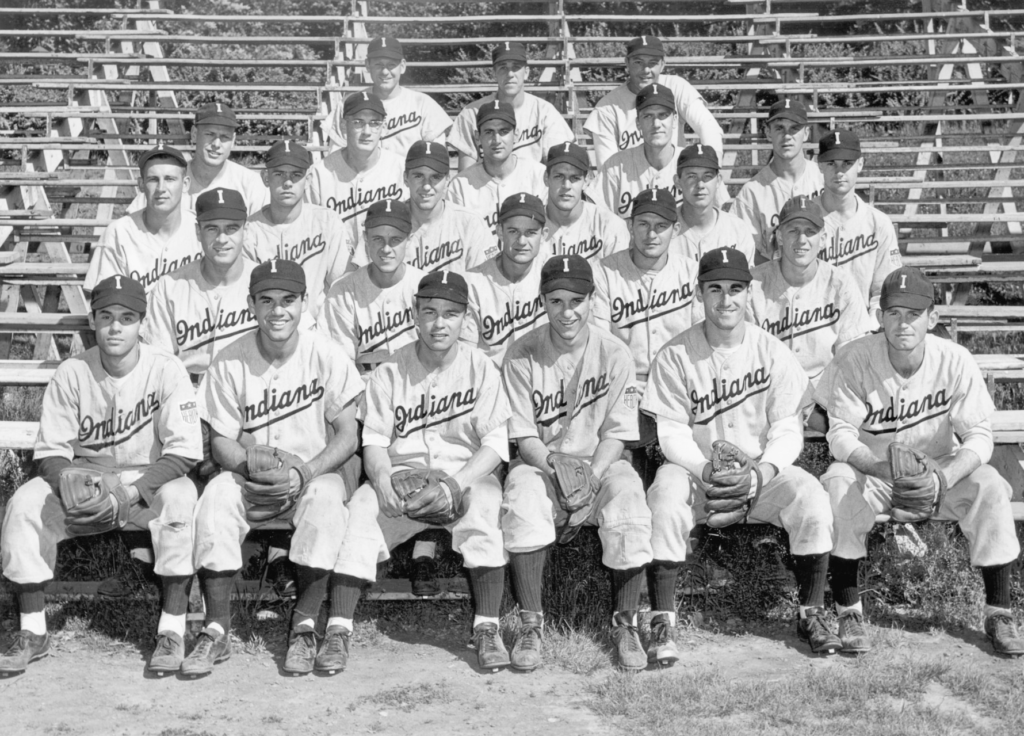
Even now, more than half a century later, former Indiana University baseball coach Ernie Andres still wonders. He wonders if his star pitcher had shown better judgment—if things had gone just a bit differently, would the Hoosiers have made NCAA tourney noise in the spring of 1949? Would Indiana Baseball have changed forever?
IU’s baseball squad has a long and exciting history, even if that history is sometimes lost in the campus excitement for basketball and football. But there have also been long stretches of futility. One of the bright spots, before the team’s current renaissance, came right after World War II.

It was April of 1949 and Andres was a rookie head coach with a veteran team—as in war veteran. Five players had served in World War II and, because of the G.I. Bill, could afford college. That they also could play baseball was a bonus Andres exploited. Much of that was necessity—he hadn’t done any recruiting.
That year, the Hoosiers won their first seven games and nine of their first 10. They won seven of their last eight games, including an 8-5 win over Purdue that clinched their first conference crown since 1938.

This was the second year of the NCAA baseball tourney competition and Indiana was invited to the District 4 playoffs, set for Western Michigan and Kalamazoo, Michigan. Purdue and Notre Dame also received invitations along with the host Broncos.
At least the trip wasn’t expensive. The total cost was $230.05. That included $11.50 for the team to see a movie.
The problem came when Andres had to select the pitcher to start against Western Michigan in IU’s first NCAA tourney appearance. On paper, the Hoosiers had two great options: Bill Tosheff and Jim McGee. McGee was the team’s true ace thanks to his curve ball—“the best of any pitcher I ever had,” Andres said. “It dropped right off the cliff.”
But Tosheff wasn’t available. In a sign of college sports’ lower status in this era, Tosheff, according to Andres, had already “left for Alaska and a summer job.”
McGee was still on campus, but he wasn’t himself. He had suffered a mysterious injury that had sapped his famous curve of its power. “He hurt his back in the shower,” Andres said of McGee. “He was probably horsing around. I don’t know. I never did know.”
Without the curve, McGee was just a fastball pitcher and Andres didn’t think that was enough. With no Tosheff, the coach chose Don Colnitis, whose 4-1 record and steady pitching made him the logical choice. But logic couldn’t overcome bad defense. Five errors helped put IU in a 6-2 hole it couldn’t overcome. IU lost 8-3.

And McGee? Well, he pitched the final three innings of the game. And even with no curveball, he didn’t allow a run.

